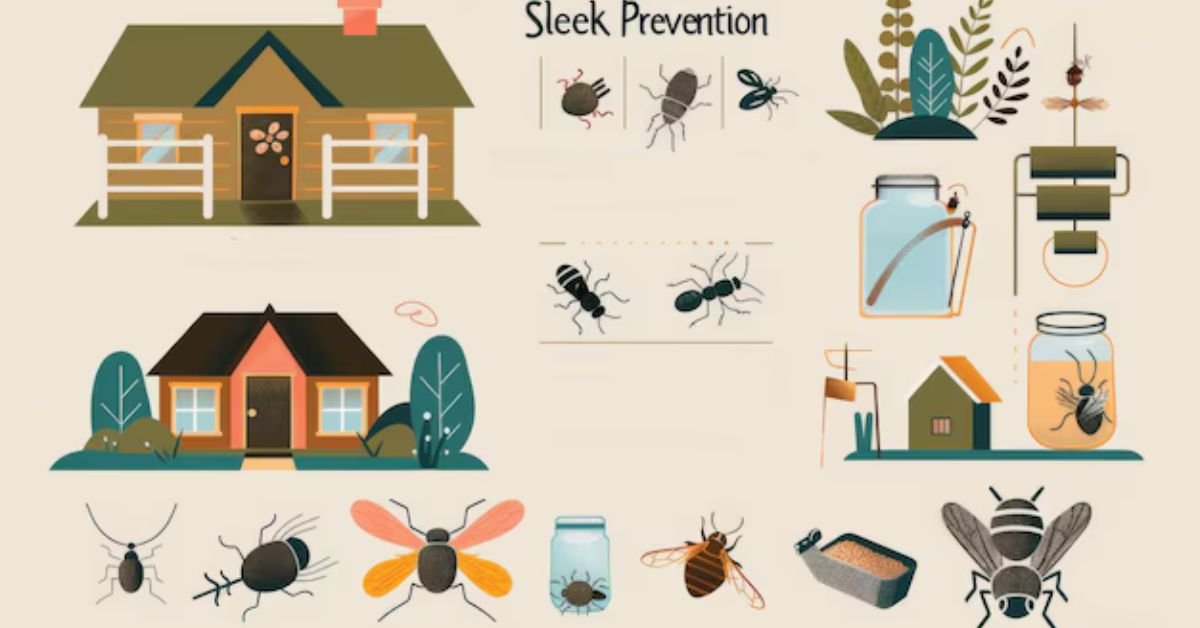Water bugs, often referred to as water beetles or cockroaches, are pests that can invade your home and create discomfort. These insects thrive in moist environments and can be challenging to manage without a systematic approach. This guide will provide detailed steps on how to effectively get rid of water bugs, including prevention, identification, and treatment methods to ensure a pest-free environment.
Understanding Water Bugs
What Are Water Bugs?
Water bugs are a broad category of insects that are typically associated with aquatic or damp environments. The term commonly refers to several species, including water beetles, cockroaches, and the more notorious American cockroach. They are characterized by their large size, oval bodies, and preference for moist conditions. Water bugs can vary in appearance but often have a shiny, hard exoskeleton.
Why Do Water Bugs Invade Homes?
Water bugs are attracted to homes due to the availability of food, moisture, and shelter. They are commonly found in areas with high humidity, such as basements, bathrooms, and kitchens. In homes, they may seek out water sources like leaky pipes, standing water, or damp areas. Understanding their preferences helps in targeting control measures effectively.
Identifying Water Bugs
Recognize Their Appearance
Identifying water bugs accurately is crucial for effective treatment. Water bugs often resemble large cockroaches with a dark, shiny appearance. They may have long legs, antennae, and wings. Knowing their appearance helps in differentiating them from other pests and applying the appropriate control methods.
Locate Common Hiding Spots
Water bugs are typically found in areas with high moisture levels. Common hiding spots include under sinks, behind appliances, in drains, and in damp basements or crawl spaces. Identifying these areas in your home can help you target your pest control efforts more effectively.
Preventing Water Bug Infestations
Eliminate Moisture Sources
Since water bugs are attracted to moisture, reducing the humidity in your home is a crucial step in prevention. Fix any leaks in pipes, faucets, or appliances promptly. Use dehumidifiers in damp areas such as basements and crawl spaces to keep humidity levels low.
Keep Your Home Clean
Maintaining a clean home can help prevent water bug infestations. Ensure that food is stored in sealed containers, and clean up spills and crumbs immediately. Regularly clean kitchen surfaces, floors, and appliances to eliminate potential food sources for water bugs.
Seal Entry Points
Water bugs can enter your home through small cracks and crevices. Seal gaps around doors, windows, and foundation areas to prevent their entry. Use weather stripping and caulk to close any potential entry points and reduce the chances of an infestation.
Treating Water Bug Infestations
Use Insecticides and Pesticides
Insecticides can be effective in treating water bug infestations. Choose products specifically designed for water bugs or cockroaches. Follow the manufacturer’s instructions carefully for application. Common options include sprays, baits, and dusts. Baits attract and kill water bugs, while sprays and dusts target areas where bugs are hiding.
Apply Natural Remedies
For those seeking natural alternatives, several remedies can help deter water bugs. Boric acid is a common choice that can be applied in areas where water bugs are active. Diatomaceous earth, a natural powder made from fossilized algae, can also be effective. Sprinkle it in areas where water bugs are known to hide, as it dehydrates and kills the insects.
Set Traps
Using traps can help monitor and reduce water bug populations. Sticky traps and bait stations are commonly used to capture and kill water bugs. Place these traps in areas where water bugs are frequently seen, such as near water sources and along baseboards.
Addressing Persistent Infestations
Consult a Pest Control Professional
If your efforts to control water bugs are unsuccessful, it may be time to consult a professional pest control service. Pest control experts have access to more powerful treatments and can assess the extent of the infestation. They will develop a comprehensive plan to eliminate the problem and prevent future occurrences.
Evaluate and Repair Structural Issues
Persistent infestations may indicate underlying structural problems. Evaluate your home for issues such as poor drainage, water damage, or gaps in the foundation. Addressing these issues can help prevent future infestations and improve overall home conditions.
Monitor and Maintain
After addressing an infestation, it is important to monitor the situation and maintain preventive measures. Regularly check for signs of water bugs and continue to control moisture levels and cleanliness. Periodic inspections and maintenance can help ensure that the problem does not return.
Conclusion
Getting rid of water bugs involves a combination of prevention, treatment, and ongoing maintenance. By understanding their behavior, identifying their hiding spots, and employing effective control measures, you can manage and eliminate water bugs from your home. Whether using insecticides, natural remedies, or professional help, a systematic approach will ensure a pest-free environment and reduce the likelihood of future infestations. Stay vigilant and proactive to maintain a clean and comfortable living space free of unwanted pests.











